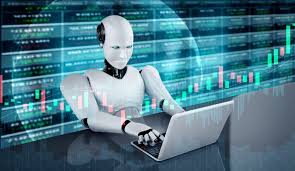
In the world of financial markets, technological advancements have continuously reshaped the landscape of trading. One such innovation that has gained significant traction in recent years is the Forex robot. Also known as expert advisors (EAs), these forex robot trading systems are programmed to execute trades on behalf of traders based on predefined algorithms and trading strategies.
Forex robots have revolutionized the way individuals and institutions participate in the foreign exchange (Forex) market. Traditionally, Forex trading required constant monitoring of market movements, timely execution of trades, and the ability to analyze vast amounts of data. However, with the advent of Forex robots, much of this process has been automated, allowing traders to capitalize on trading opportunities around the clock without being tied to their screens.
So, what exactly are Forex robots, and how do they work?
Understanding Forex Robots:
Forex robots are software programs designed to analyze market conditions, identify trading signals, and execute trades automatically. These robots are typically built on algorithms that incorporate technical indicators, price action patterns, and other parameters to make trading decisions.
Traders can either develop their own Forex robots or purchase them from third-party developers. Many trading platforms and brokers offer a wide range of Forex robots that cater to various trading styles and preferences. These robots come with customizable settings, allowing traders to adjust parameters such as risk tolerance, lot sizes, and trading timeframes according to their preferences.
How Forex Robots Work:
Forex robots operate based on a set of predefined rules and conditions. These rules are programmed into the software, dictating when to enter or exit trades, how much to invest, and other important parameters. The trading logic behind Forex robots can vary significantly, ranging from simple moving average crossover strategies to more complex algorithms based on machine learning and artificial intelligence.
Once deployed, Forex robots continuously monitor the market for trading opportunities. When a favorable setup is identified, the robot automatically executes the trade according to its programming. This automation eliminates the need for human intervention and emotional biases, which are common pitfalls in manual trading.
Advantages of Forex Robots:
The popularity of Forex robots can be attributed to several advantages they offer to traders:
- 24/7 Trading: Forex robots can operate round the clock, taking advantage of trading opportunities in different time zones and sessions.
- Emotion-Free Trading: By removing human emotions from the trading equation, Forex robots can execute trades with discipline and consistency, minimizing the impact of fear, greed, and other emotions that often lead to irrational decisions.
- Backtesting and Optimization: Before deploying a Forex robot in live trading, traders can backtest its performance using historical data to assess its effectiveness. Additionally, robots can be optimized to improve their performance under various market conditions.
- Speed and Efficiency: Forex robots can analyze market data and execute trades in milliseconds, much faster than human traders. This speed can be crucial in capturing fleeting trading opportunities and avoiding slippage.
- Diversification: Traders can deploy multiple Forex robots simultaneously, each employing different strategies or trading instruments, thereby diversifying their trading portfolios and reducing risk.
Challenges and Considerations:
While Forex robots offer numerous benefits, they are not without their challenges and considerations:
- Market Volatility: Forex markets can be highly volatile, and sudden price movements or unexpected news events can lead to significant losses, especially if the robot’s algorithm is not adequately equipped to handle such conditions.
- Over-Optimization: Optimizing a Forex robot too much based on historical data can lead to overfitting, where the robot performs well in backtests but fails to deliver similar results in live trading due to changes in market conditions.
- Technical Issues: Like any software program, Forex robots are susceptible to technical glitches, connectivity issues, and system failures, which can disrupt trading operations and lead to losses.
- Lack of Adaptability: While some Forex robots incorporate machine learning and adaptive algorithms, many are rigid and unable to adapt to evolving market conditions, potentially leading to suboptimal performance during periods of market turbulence or structural changes.
Conclusion:
Forex robots have emerged as powerful tools for automating trading operations and streamlining the investment process. By leveraging advanced algorithms and automation technology, traders can execute trades with precision, efficiency, and consistency, while mitigating the impact of human emotions and biases.
However, it’s essential to recognize that Forex robots are not a one-size-fits-all solution, and their effectiveness depends on various factors such as market conditions, trading strategy, risk management, and technological robustness. Traders should conduct thorough research, backtesting, and optimization before deploying Forex robots in live trading and always remain vigilant to monitor their performance and adapt to changing market dynamics. With the right approach and understanding, Forex robots can be valuable tools in the arsenal of traders seeking to navigate the complexities of the Forex market and achieve their investment goals.